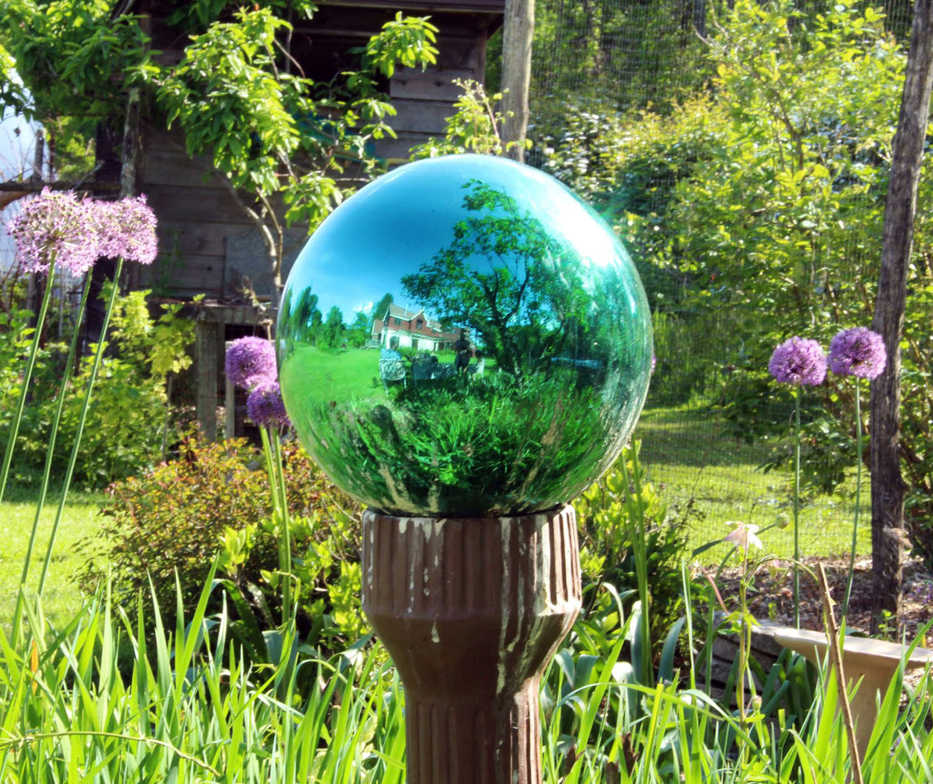Did I see a glint of mocking laughter in a friend’s eyes when I mentioned the new addition to my garden, a gazing globe?
These mirrored glass ornaments were popular until about 50 years ago, when they fell from their pedestals, figuratively speaking. They’re now making a comeback, straddling the fence between attractive ornament and — to some people — kitsch.
Gazing globes date back to 13th century Italy, a country known for garden ornaments, and, more specifically, to Venice, a city known for glassworks.
They once were more than mere ornaments. They also were put in place to bring happiness, ward off evil spirits or attackers, and attract fairies. In Victorian times, a globe near a gate allowed you to look around the corner to see who or what was approaching from the other side of the fence or hedge.
The globes also found their way indoors. A butler could look around a corner to check if anyone was pocketing cutlery. A father could maintain a watchful eye on his daughter and her beau.
Look at a gazing globe and you’ll have a fish-eye view of everything except what’s directly behind the globe. As you move, the reflection also moves, except that you, the viewer, are always staring directly back at yourself. You are always the center of this perceptual universe — a metaphor, perhaps, for existence.
In my garden, however, the globe isn’t a protector or metaphor; it’s really just an ornament. It’s a shiny object off which dances light. In summer, it peeked out from among low shrubs and flowers. Over the past few months, the globe has increasingly come into focus, like a developing photographic image. It stands out most boldly in the garden on those winter days when it’s perched above and surrounded by billowing, white snow.
Today’s gazing globes have evolved from those orbs of past decades that often stood alone on pedestals in the center of lawns. In various sizes and tints, today’s globes nestle into flower beds, hang from branches or float in ponds. Rather than having a smooth, mirrored surface, today’s gazing globe might be a mosaic of silvered and colored glass.
Some gardeners make their own by gluing shards of mirrors or tile onto old bowling balls. To avoid the fragility of traditional gazing globes, some are now made from shiny, stainless steel.
I remember gazing globes from my youth, and nostalgia figures into my liking for them. I also remember being a little nervous around them, and I still like the glass ones for their fragility. They’re not that fragile, though; more than once, strong winds have knocked my globe off its pedestal and each time the globe, thankfully, made a soft enough landing to remain intact.
Most of all, I like gazing globes because they are fun, whether truly or mockingly so.

